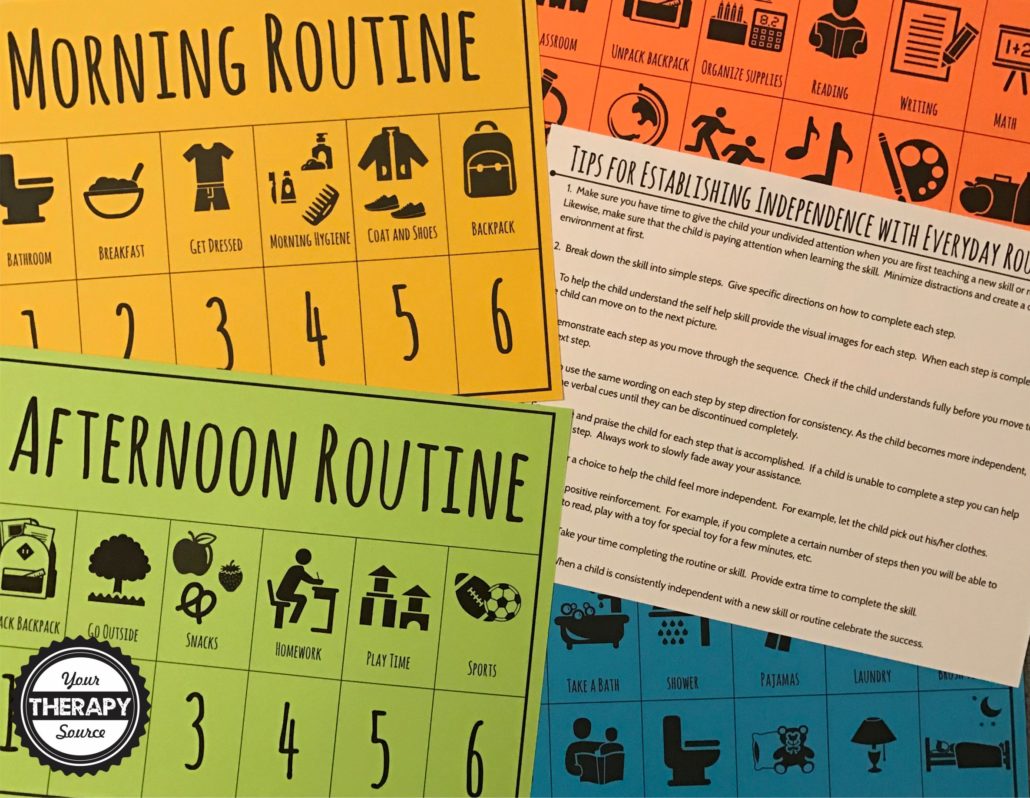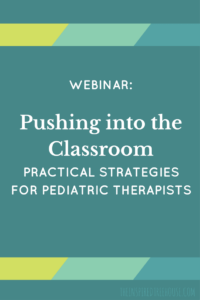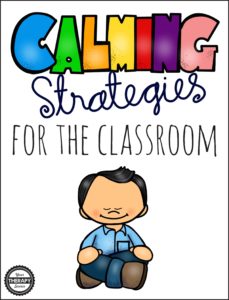Using Video Modeling to Help Students Transition Between Activities

Have you ever considered using video modeling to help students transition between activities? During the elementary and preschool day, transitions account for 25% of the day. That’s a lot of transitions! No wonder why teachers ask OTs and PTs for help
Skills Needed for Successful Transitions in the Classroom
There are many reasons why a student may have trouble with transitions. Think about all the skills needed for successful transitions:
- listening skills: students need to listen to the directions.
- follow directions: students need to be able to follow multi-step motor commands.
- self-regulation skills: students need to be able to control their emotions, thinking, behavior and motor actions in different situations
- body awareness: students need to maintain appropriate space between themselves, their peers and classroom furniture. Check out Personal Space Journey for students who need help with body awareness.
- motor planning: students need to be able to plan and execute the motor action of moving their body from one activity to another.
- motor timing: students need to be able to move slowly, quickly, start and stop.
There are many ways to help students with transitions and video modeling has been shown to be an effective strategy.
Video Modeling to Help Students with Transitions
Video modeling involves videoing an appropriate behavior which is then shown to a student over several sessions, and the student practices the observed behavior. Research indicates that video modeling can help to encourage quick transitions and increase rates of on-task behaviors.
Steps of Video Modeling
There are 10 steps when using video modeling as an intervention. The steps include the following and should be repeated until the students are proficient (Sigafoos et al, 2007).
- Select the target behavior(s) i.e. transition from one activity to another smoothly
- Get the right equipment.
- Plan the video recording.
- Collect baseline data. i.e. How slowly are the students’ transitioning currently?
- Make the video showing students completing the transition.
- Arrange the environment for video viewing.
- Show the video.
- Monitor progress.
- Troubleshoot any issues.
- Fade the video model.
Using Group Video Modeling to Help Students Transition Between Activities
Group video self-modeling was used in a recent research study to determine if using video modeling to help students transition between activities was beneficial.
Using students in a third-grade classroom, the researchers wanted to improve the speed that the students using group video self-modeling. Baseline data was collected that separated the students into three groups: slow, medium and fast transition groups. Following the intervention of the video self-modeling, data analysis indicated the following:
- group video self-modeling produced immediate gains in the speed with which the average performance of students lined up and transitioned.
- students in both the medium and slow groups increased
their speed to a level that matched what was achieved by the fast group.
The researchers recommend future research on: what other types of behaviors could be helped with group video modeling, the least amount of times the videos need to be shown to be effective and determining whether the students prefer to see peers or themselves in the videos.
More Strategies to Help Students Transition Between Activities
In addition to video modeling, there are several other strategies that may be effective to help students transition from one activity to another.
1. FOLLOW A ROUTINE – Establish a consistent schedule or routine for the student to follow. Provide visual picture symbols if necessary for the student to follow.

2. MAKE SURE THERE IS ENOUGH TIME – Allow the student enough time to experience the activity before moving on to the next activity. Many children can exhibit negative behaviors if they never had any time to participate in the activity to begin with.
3. PROVIDE CLEAR AND CONCISE DIRECTIONS – Make sure the student understands what the directions are or what is expected of him/her. Some students will need to be taught how to follow the routine. This takes practice and time. One or two step motor commands should be effective and concise.
4. GIVE WARNINGS – Provide verbal and physical cues that a transition is approaching. There are plenty of visual timers that can be used to provide warnings for transitions.
5. DECREASE THE NUMBER OF TRANSITIONS – Modify schedules to have the least amount of transitions possible. For example, if a student is already out of class to go to the nurse or another related service it may be a good time to schedule therapy to reduce the number of transitions in and out of the classroom. Another option would be to provide push in therapy services to avoid transitioning in and out of the room.

6. SING – Sing songs or chants to signal transitions. Use the same songs each time so children can anticipate what is to happen next.
7. SNEAK IN MOVEMENT TIME DURING TRANSITIONS – If possible, transition time is a wonderful time to sneak in some physical activity. Remember to teach children what STOP and GO means. Here are 56 transitions for throughout the school day.

8. OFFER FEEDBACK – Provide feedback about transitions. If a student does a good job transitioning explain to him/her what they did correctly. If changes need to be made offer suggestions on how to improve the transition the next time.
9. DECREASE PROMPTS – As the student’s skills improve during transitions, encourage the student to transition independently.
10. ENCOURAGE SELF-MONITORING – Ask the students to reflect on what went wrong and what went right during the transition process. Try using the “Are You Ready to Work?” clip chart for self-monitoring.

11. REINFORCE POSITIVE BEHAVIORS – Provide positive reinforcement for other students who complete transitions successfully. Students will learn from each other and model other behaviors.
12. BE PREPARED – When a new activity is starting, be ready to go. When there is less downtime the transition may go smoother.
13. PRACTICE, PRACTICE, PRACTICE – Students need to be taught how to transition properly and they need to practice those skills over and over again.
14. TEACH CALMING STRATEGIES – Sometimes students may need some extra help when transitioning from recess, gym class or the lunchroom. Teach the students calming strategies or deep breathing in order to get their bodies ready to work.

Calming Strategies – Classroom edition includes 26 full page strategies for students to use in the classroom to help them to calm down. The packet also includes smaller versions of the cards to print and put on a key ring and a choice board with small picture icons. It is in full color and black and white.
Conclusion on Using Video Modeling to Help Students Transition
Related service providers and teachers can develop and implement video modeling to help students transition between activities throughout the school day. There are 10 steps to video modeling. The video modeling can be done by peers or student self-modeling. Group video self-modeling has been shown to be an effective strategy to produce immediate gains in the speed with which the average performance of the students lined up and transitioned. There are many other strategies to help students transition such as following routines, clear directions and practice.
References:
McNiff, M. T., Maag, J. W., & Peterson, R. L. (2018). Group Video Self-Modeling to Improve the Classroom Transition Speeds for Elementary Students. Journal of Positive Behavior Interventions, 1098300718796788.
Schmit, J., Alper, S., Raschke, D., & Ryndak, D. (2000). Effects
of using photographic cuing package during routine school
transitions with a child who has autism. Mental Retardation,
38, 131–137.
Sigafoos, J., O’Reilly, M., & De la Cruz, B. (2007). How to use
video modeling and video prompting. Austin, TX: PRO-ED.


